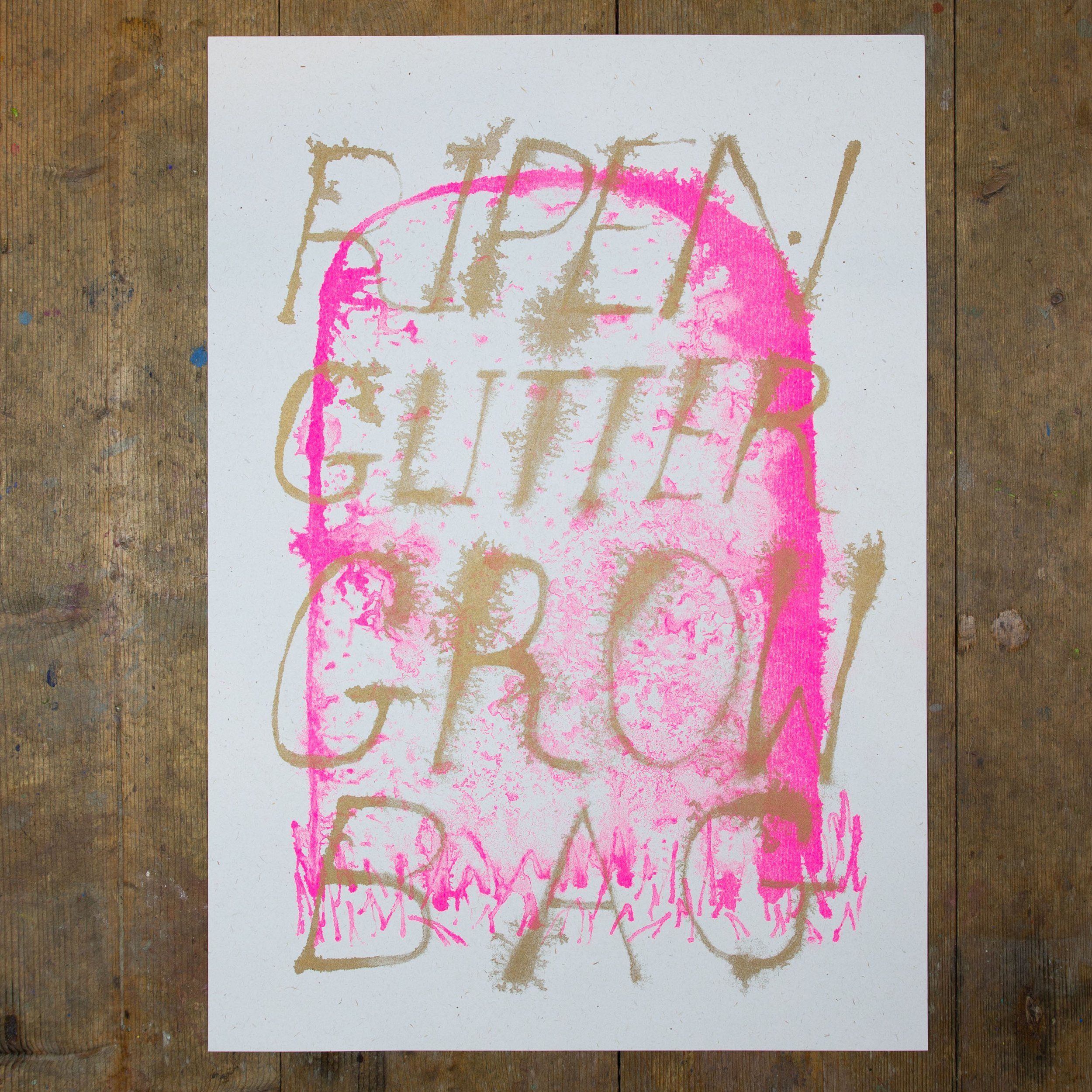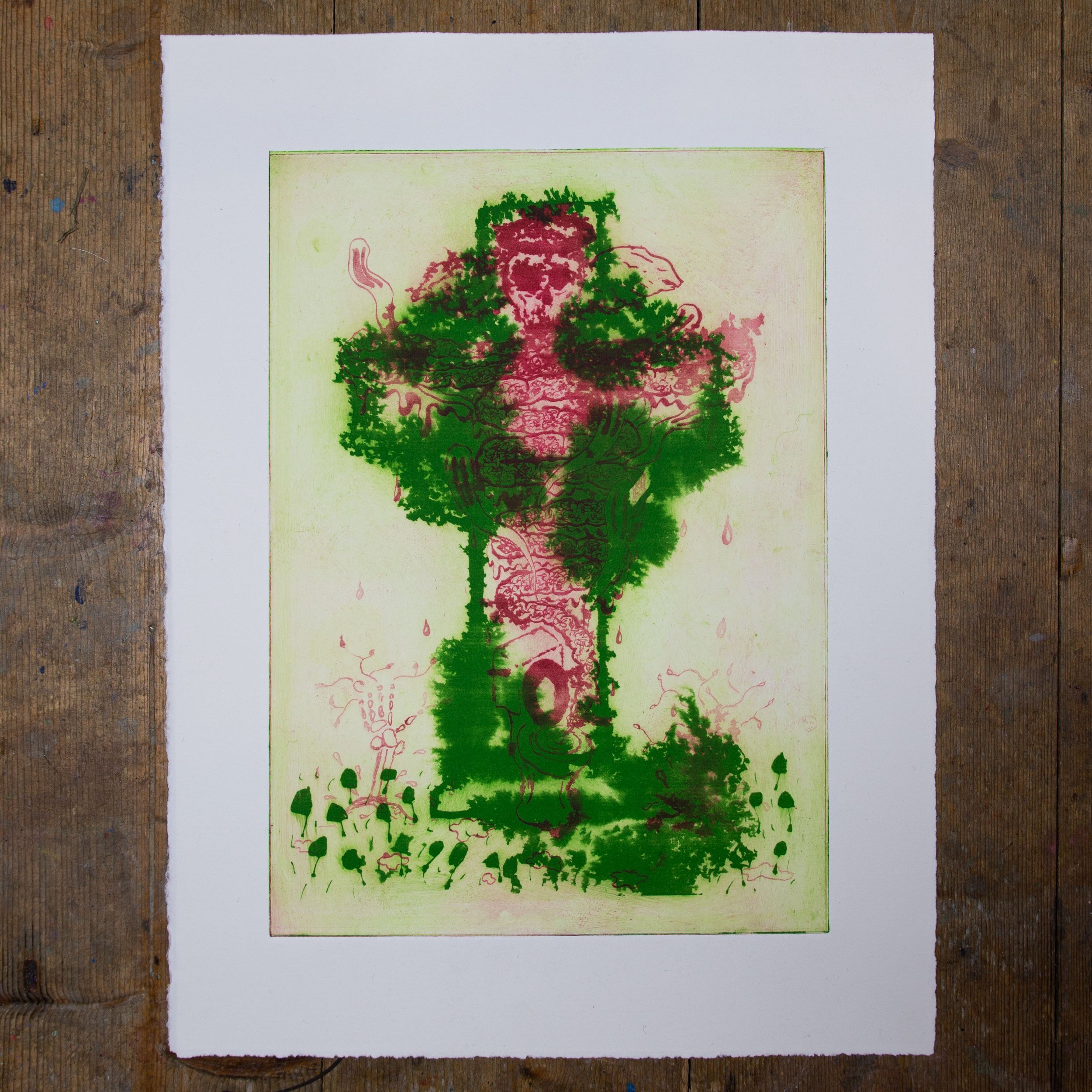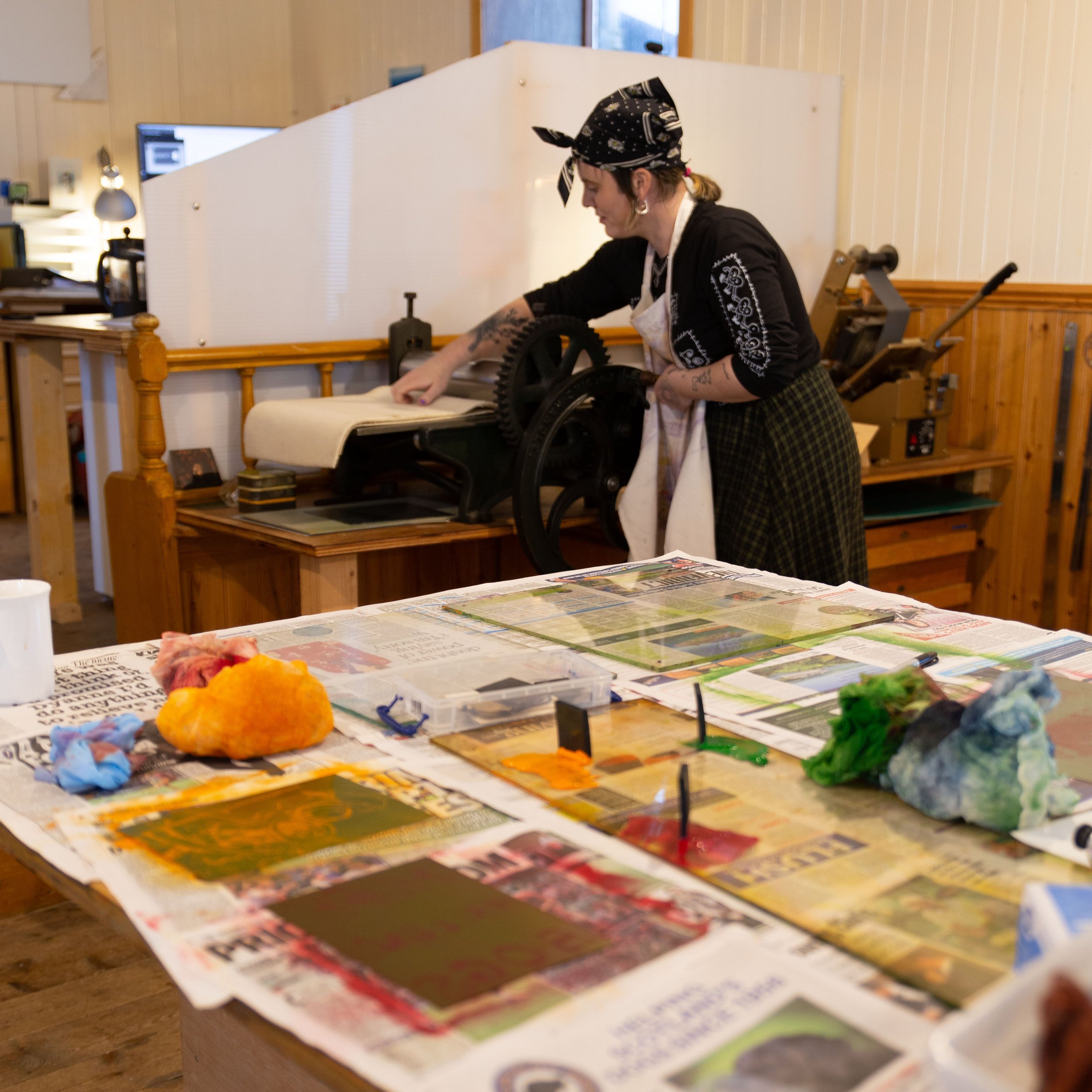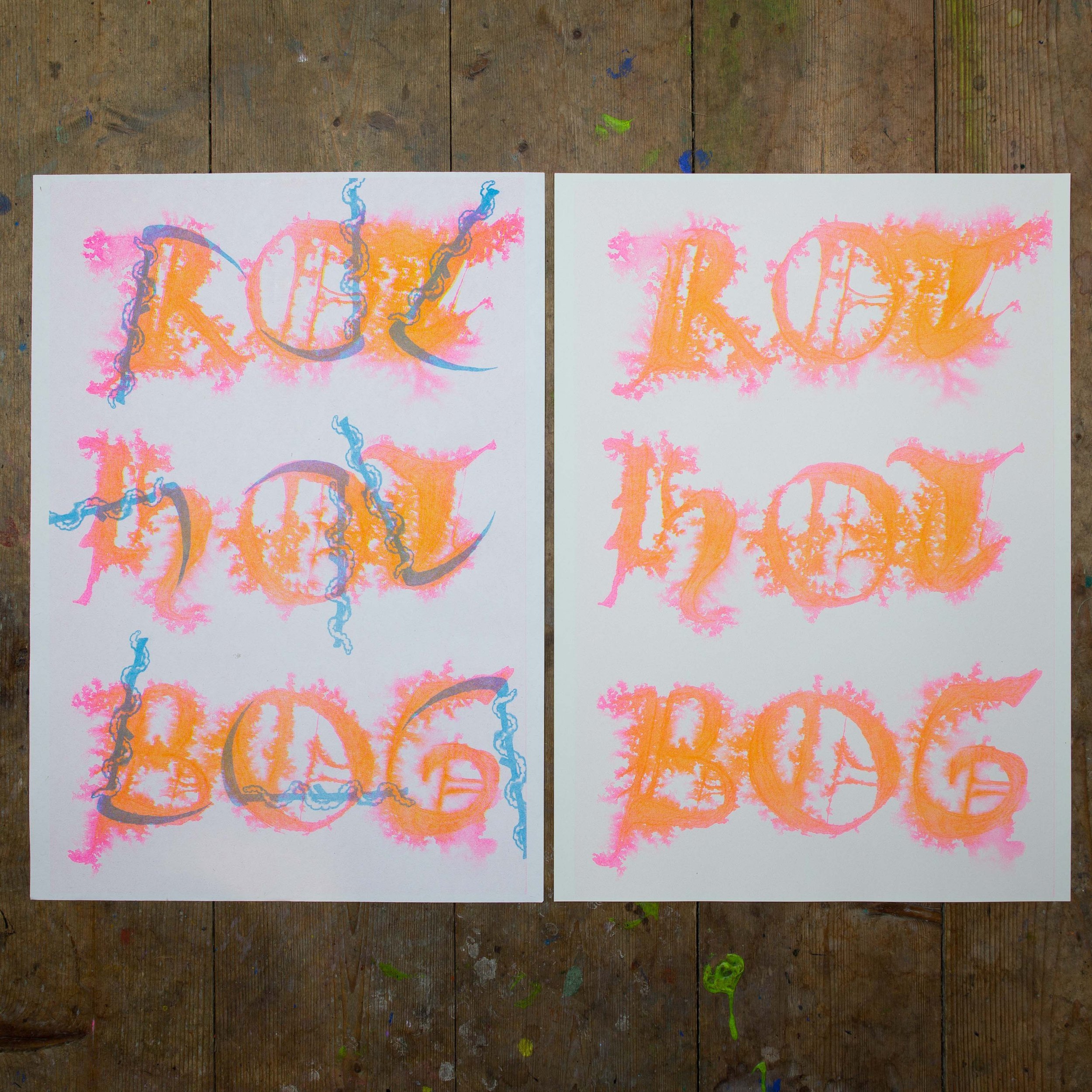Sammy Paloma: Workshop Bursary Blog
Artist Sammy Paloma set the 2022/23 Gaada Workshop Bursaries in motion, playfully exploring drawing, risograph and photopolymer etching during her sessions.
Sammy has generously shared some words with us about her experience:
Over four sessions, spread across October and November, I had the joy of undertaking a Workshop Bursary at Gaada. On a very basic level I’m just really pleased with the work I produced during my time there, and it’s been the best possible surprise to me.
I went into Gaada for my first session with a rough idea of some of the things I wanted to try out. On Daniel’s suggestion I got started on some sketching with ink on paper and a spray bottle filled with water which I repeatedly soaked the paper in as I went. I’d been talking about my interest in the boggy nature of the landscape in Shetland and how that sodden soil might be interacting with the dead buried in it. Alongside this was my interest in the way that different materials make you draw in different ways, and so flooding the paper with water was a really fun, unpredictable way to play with these two things. In this first session we produced a two-colour riso print in gold and pink. The pink formed a background image of a gravestone (I’m deeply interested in both the spiritual and political aspects of death and grief), the foreground a piece of text rendered in gold. I was pleased with this, but felt I hadn’t quite utilised the potential of layering colours that riso offers.
In the time between this session and my next I sketched a whole lot more, using this technique of ink on paper and a spray bottle of water (this time with a bit of vinegar mixed, that gave the ink drawings a bleached out look to them), and trying to play with separate but interlocking layers. This interest in layering stayed with me for my whole time working at Gaada.
[CW: The following paragraph mentions grief and the depressing state of bereavement ‘allowances’ in the UK]
Toilets have appeared in a lot of my paintings over the last year. I’m a Bataille-fangirl, and I’ve always found his scatological-economics pretty compelling. It goes something like this: all economic theory is a failure unless it can account for and adequately deal with the waste-products of a society. Toilets have, for me, always been a kind of perfect portal through which to get closer to our own waste products. I feel like grief is so often dealt with as a waste-product of death, and so we’ve seen an attempt to streamline it into a series of linear activities. For example: I was given 30 minutes with the body of my dad in the morgue; 40 minutes to an hour for the funeral; there is no legal right to paid-leave for bereavement in the UK, but I was given 3 days paid-leave when my dad died during my employment with Royal Mail, an allowance that is considered - depressingly - generous. But grief isn’t linear, and it can’t be contained, it will spill out into every part of your life. I draw liquids spilling out of cups, toilets overflowing, puddles, everything dripping, or crying.
Me and Daniel took these wet-looking drawings, ink bleeding out across the paper, one word blurring into another, and scanned them to produce photopolymer plates for a series of lithograph prints. Lithography was attractive due to it’s texture, even the blank background of an image has body in the print. There’s also something imperfect to lithography that’s so enjoyable, no two prints from a plate are exactly the same (or at least it takes a great deal of work to achieve such exactitude), it feels like magic every time you run the paper through the roller. Everyone at Gaada encouraged me in this experimentation, trying out different colour combinations, different configurations of my prints on the paper. I’m not sure if we managed to quite finish anything during my Workshop Bursary, but in a way this was precisely the point that was being encouraged, to just play and keep playing, right up until the last minute of my final session. I can’t wait to take these threads begun during my time at Gaada, and see where they might go, in particular I’d love to produce an edition of one of the photopolymer lithograph prints in the future. I’m also really interested to experiment with mono-printing now, which wasn’t something I explored as part of the Workshop Bursary, but might be an interesting way to take some of what I’ve learnt (e.g. layering colours with printmaking, emphasising texture, drawing techniques that destabilise control) and see how I might apply it in my own studio at home.














